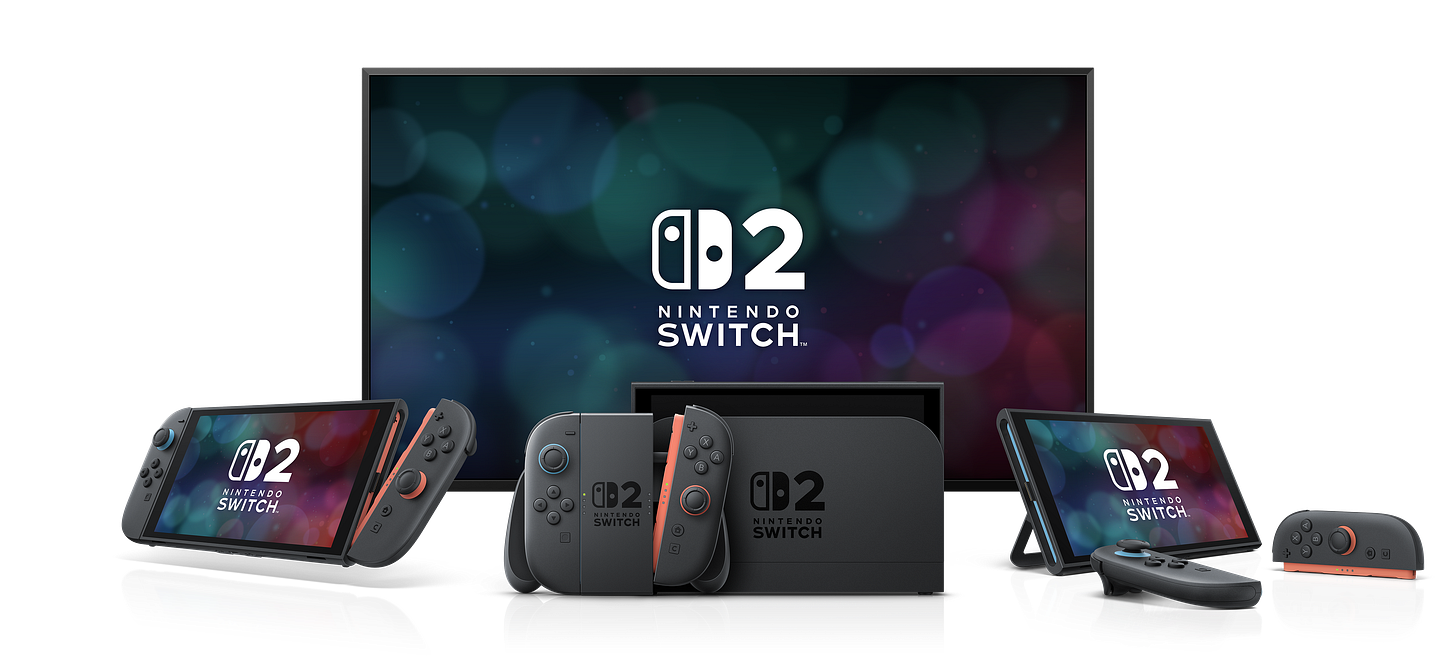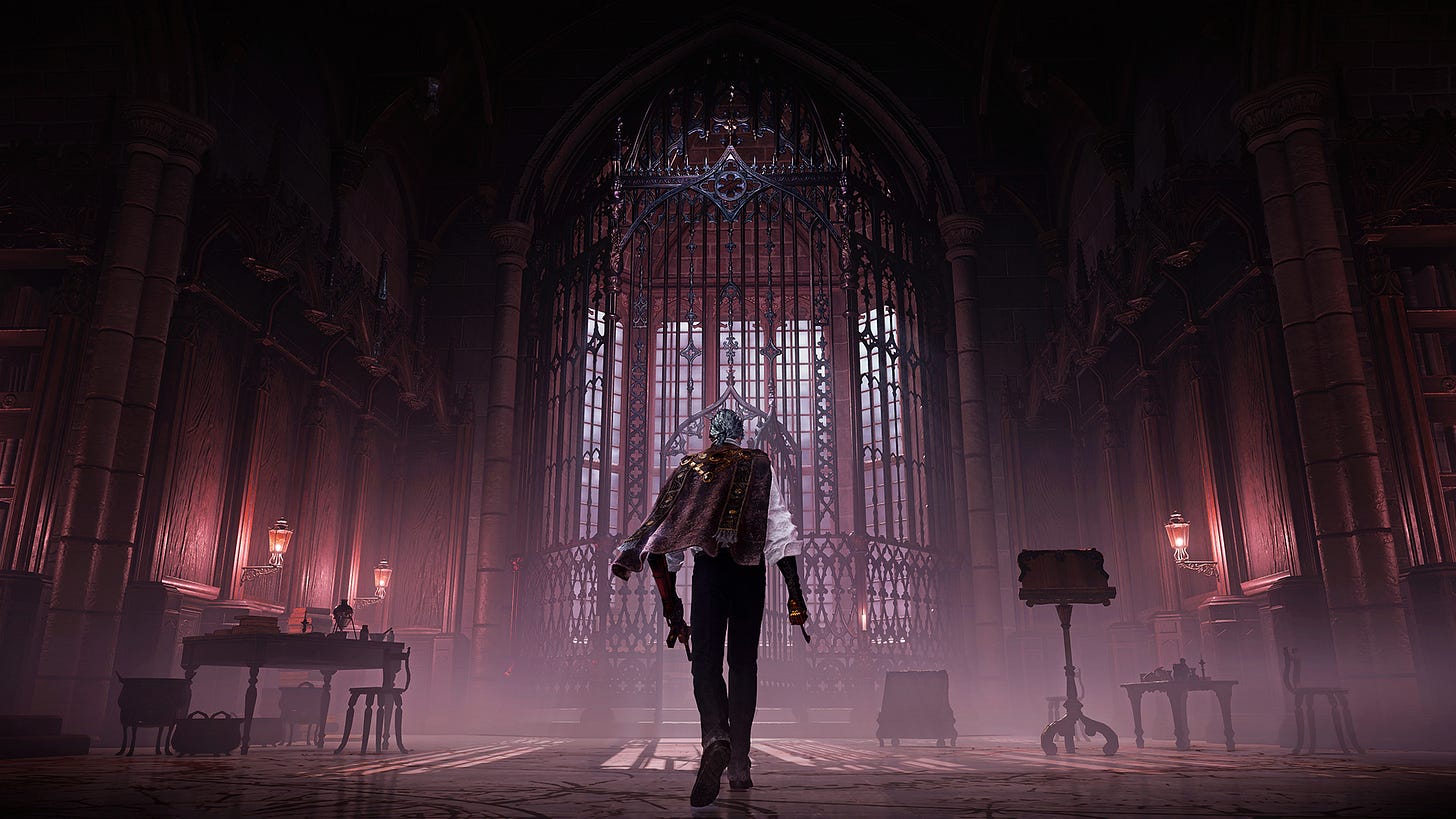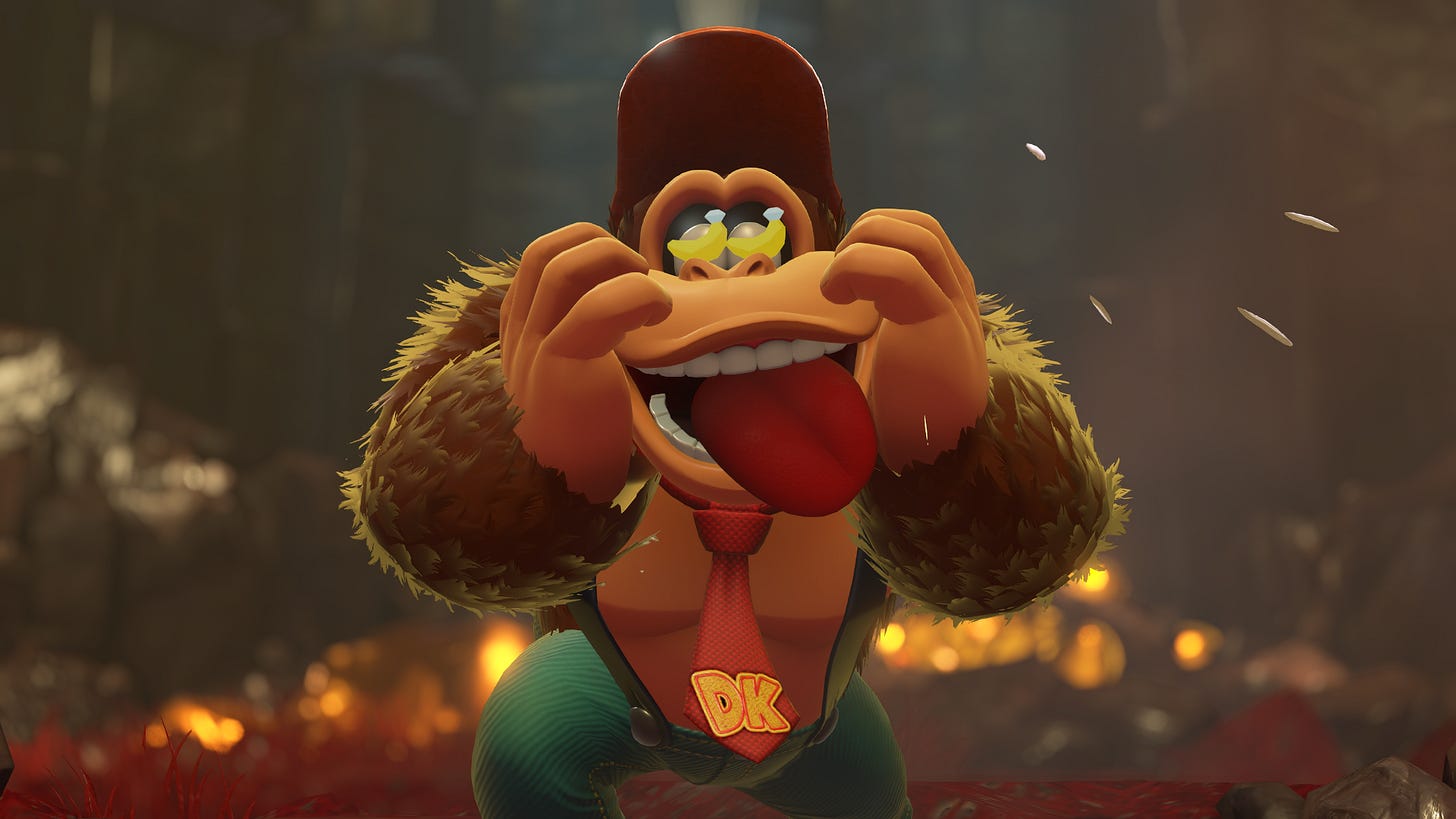It feels almost inappropriate to write about Nintendo’s business strategy at a time like this. The tariffs imposed on Asian countries by the US, the very countries that produce the chips and machines that play our games, feels frankly existential.
We just have to hope the various Governments reach an agreement. Or the Entertainment Software Association can make an effective case for our industry. In a time when video game growth is slow to non-existent, this couldn’t come at a worse time.
But anyway. Nintendo.
The Nintendo Switch 2 pricing row
I’ve been caught somewhat off-guard by the hysteria around the price of Nintendo Switch 2. The retailers I spoke to thought it reasonable, the analysts didn’t shift their sales estimates, and it was roughly in-line with the predictions. I’ve personally spent £430 on the Mario Kart World bundle, and although I’d hardly call it cheap, I didn’t think it unreasonable.
But that’s just it with value… it’s subjective. £430 for a console and a game that will likely be a fixture in my household for the next seven years doesn’t seem astronomical to me. But someone else may have a different value perception.
I recall when Nintendo charged full price for the Super Mario 3D All-Stars collection in 2020. It was a pretty basic port job of three old Mario games. Personally, I saw a product that was at least 80 hours of guaranteed joy. It felt like a bargain. But some fans were outraged. How could Nintendo justify that price tag when it’s clearly spent so little in putting it together? It’s an argument I’ve always found hard to follow. It’s not like we expect romantic comedies to have a cheaper cinema ticket price just because they don’t have the same budget as a superhero flick. But at the same time, when other game collections come in at far more wallet-friendly prices (Rare Replay featured 30 iconic games for £30, for instance), I can see why some fans felt short changed.
In the end, that Mario collection shifted nine million copies in just a few months. People did see the value in it. Will the same happen here? For all the hand-wringing, will Nintendo Switch 2 just carry on where its predecessor left off?
Nintendo Switch 2 looks like a pretty good console with a bunch of great looking games. That’s the main thing. You can’t fix a bad product. The price can always be amended
I know a lot of the issues are around the $80 price associated with Mario Kart World (although it’s cheaper in the bundle). It’s the highest price we’ve seen for a AAA video game yet, and a big leap over the Switch 1 pricing. Is it too high for a game? Will people find that hard to justify in a cost-of-living crisis? Or does its inevitable longevity and quality make it a more palatable purchase?
Ultimately, the market will decide. Nintendo, PlayStation and Xbox have all got the pricing wrong in the past, and all reacted accordingly. Nintendo Switch 2 looks like a pretty good console with a bunch of great looking games. That’s the main thing. You can’t fix a bad product. The price can always be amended.
Assuming tariffs don’t make that financially untenable.
Is Nintendo taking on PlayStation and Xbox?
It’s been a long time since I’ve considered Nintendo a direct rival to PlayStation or Xbox.
They’re competitors, of course. In the modern entertainment age where nobody has any time, everyone is competing with everyone – movies, books, TikTok, walks in the park, you name it.
But ever since Wii, Nintendo has largely avoided targeting traditional gamers (bar a very brief spell at the launch of Wii U), and focused its efforts on families, with novelty control schemes and brightly colored games.
Of course, the Switch did successfully appeal to older gamers. The machine’s portability has attracted time-poor adults who don’t get much TV time (myself being one of them). But it’s still not quite a direct competitor to Xbox or PlayStation. The most popular franchises on Sony and Microsoft’s consoles remained largely absent from Nintendo. Call of Duty, Madden, Assassin’s Creed… even the Switch versions of FIFA (up until the EA Sports FC rebrand) were the significantly inferior ‘Legacy’ editions.
However, the Switch 2 release slate is filled with games that have sold very strongly on PlayStation and Xbox formats. There will be Call of Duty, Madden, EA Sports FC, Final Fantasy, plus more modern hits like Elden Ring and Cyberpunk 2077. At this point, I’m half expecting a Switch 2 version of GTA 6.
Switch 2 is clearly powerful enough to run capable versions of modern games. With publishers, developers and even platform holders targeting PCs with variable specs, including the Steam Deck (plus the existence of the Xbox Series S), it’s not unreasonable to suggest Switch 2 might be able to run most (or at least a lot) of things this generation throws at it. That certainly wasn’t the case last time.
In the engagement era, any platform that’s hoovering up some of those valuable Madden or Call of Duty hours is a competitor to PS5 and Xbox consoles
In addition, one of the biggest surprises of the Switch 2 reveal was The Duskbloods, a new hardcore action game by Elden Ring developer FromSoftware. Nintendo signs games like this from time-to-time, and they’re largely designed to bring in new audiences to the Nintendo ecosystem. And the audience for Duskbloods is, frankly, a PlayStation audience.
Now, I’m not expecting FromSoftware fans to trade-in their PS5s for a Switch 2. Nor am I suggesting PlayStation or Xbox gamers would ever choose Mario Kart over Gran Turismo or Metroid over Halo. But what about as an additional purchase? A means to take something like Elden Ring on-the-go? We know there is already a decent cross-over between PlayStation/Xbox owners and the Switch audience. The difference this time is that there appears to be more of the same games coming to Nintendo’s system.
In the engagement era, any platform that’s hoovering up some of those valuable Madden or Call of Duty hours is a competitor to PS5 and Xbox consoles. And although PS5 and Xbox Series X are technically the superior machines, Nintendo has the more flexible option (at least, for now). I have often felt PlayStation/Xbox and Nintendo play slightly different versions of the same sport, and I still feel that way, it’s just they now appear to be playing in the same park.
I know certain third-party developers that will be hoping I’m right. At a bar in GDC, I spoke to one leader at a major independent studio who was openly concerned by Xbox’s strategy of moving away from the console. He was concerned it would negatively impact future negotiations with Sony. It’s tough negotiating with somebody when they know they’re your only real choice, he said.
Perhaps Nintendo Switch 2 could be that alternative, viable option for third-party developers.
Nintendo’s success is defined by its brands, not its consoles
In our reaction podcast last week, GameSpot’s Lucy James talked of her surprise that there weren’t more first-party games on display during the Switch 2 reveal. In truth, there was plenty, including some pretty big franchise games in the form of Mario Kart and Pokémon.
Yet I understood where Lucy was coming from, because it did feel like something was missing. Namely, a big new Mario or Zelda game that can (alongside Mario Kart) appeal to both mainstream and hardcore audiences alike.
Yet what if, and bear with me here, Donkey Kong Bonanza is that game.
Let me jump back a bit. A lot has been made of the success of Nintendo Switch because of its 150 million sales, and it’s certainly impressive. But it’s not astronomically bigger than other eras. In the previous generation (Wii U and 3DS), Nintendo shifted a disappointing 90 million pieces of hardware. But the generation before (Wii + DS) it was over 250 million, the one before (GameCube + GBA) was 100 million, and in the 1990s, across the N64, SNES and GameBoy, Nintendo shifted 200 million devices. As a single product, Switch is one of the most successful games machines of all time. But if you take a more holistic view of Nintendo’s hardware business, selling 150 million machines over eight years is great, but not unheard of.
Where I believe Switch has really delivered for Nintendo has been in terms of its IP. Before the launch of The Legend of Zelda: Breath of the Wild, the best-selling Zelda game had only sold nine million units (2006’s Twilight Princess), Breath of the Wild has sold nearly four times that. Super Mario Odyssey is over twice as big as the previous best-selling 3D Mario game. Animal Crossing is three times bigger than the previous best-selling title in that series. Mario Kart, Pokémon, Luigi’s Mansion… even smaller brands like Pikmin, Fire Emblem and Kirby, are all exponentially bigger today than they were eight years ago.
It’s the success of IP like Donkey Kong that will define how successful the Switch 2 generation will be, more than how many units of hardware are sold.
It's this franchise growth that has enabled Nintendo to transform itself into a Disney-like entertainment behemoth. LEGO sets, theme parks, movies, live events, museums… alarm clocks. Yes, Nintendo has always had a strong licensing business, but it’s now doing a lot of the work itself. It co-developed those LEGO sets, it’s co-producing the movies, it made the alarm clock and it designed the theme parks.
There are still a few brands that didn’t grow much during the Switch era, which remain opportunities for Nintendo. One of those is Metroid, which received one (excellent) 2D game and an (excellent) remaster during the Switch era, both of which performed well by Metroid standards. But Metroid Prime 4 Beyond, which is this year’s fully-fledged new 3D Metroid that crosses the Switch 1 and 2 generations, is the franchise’s biggest launch in more than 15 years.
But as I said in last week’s newsletter, I think the biggest opportunity could be Donkey Kong. The character had a starring role in 2023’s $1bn Mario movie and a new Donkey Kong-themed area has just opened at Super Nintendo World. Yet game-wise, outside of a few guest appearances and a couple of remasters, he was largely missing from the Switch era.
So I am really keen to see how big Nintendo goes with its new Donkey Kong game. Because it’s the success of IP like that which will define how successful the Switch 2 generation will be, more than how many units of hardware are sold.
And Another Dring: Ok, so I was scrabbling around for a name for my columns and opinion pieces. I love Dean Takahashi’s ‘The DeanBeat’. What could my version be? Then my dear friend James Batchelor (he of GamesIndustry.biz, Develop and MCV fame) jokingly suggested ‘Here’s The Dring’. And… I sort-of loved it. I asked a few of my friends in the industry to talk me out of the name, and they didn’t. So here it is.
Of course, if you, my dear readers, find it a little too silly for what is ultimately a business publication, then I will happily change it. In fact, let’s put it to a vote.















Share this post